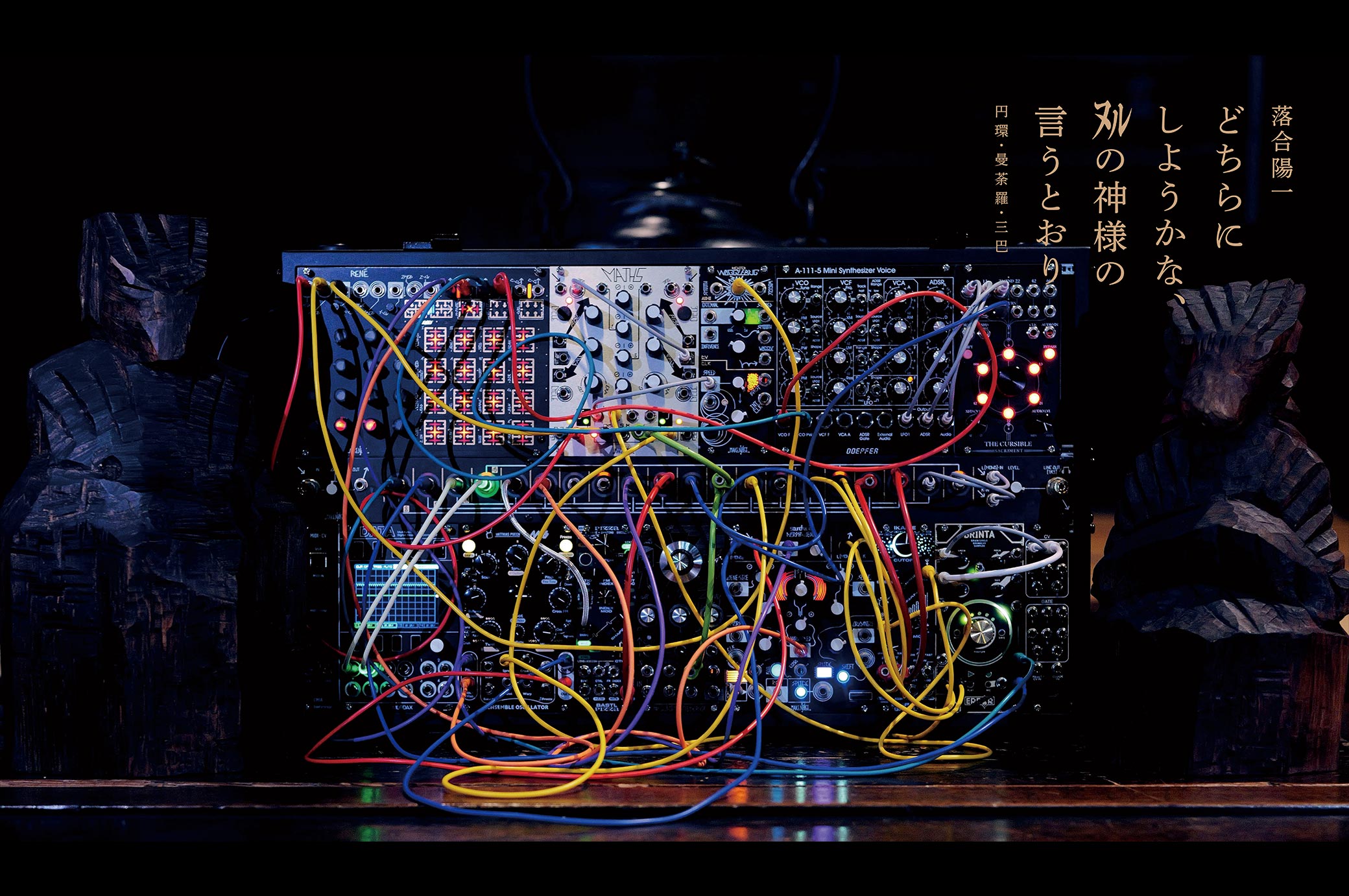
-
円環・曼荼羅・三巴
Animistic Randomness from the Divine Null: Eeny, Meeny, Miny, Moe - Circle, Mandala, Triangle -

日下部民藝館で四回目の展覧会が始まる.初回が2021年のプラチナプリントの展覧会だから高山の地に通い始めて4年になる.2022年の「遍在する身体,交錯する時空間」,2023年の「ヌル即是計算機自然」と引き続いての「どちらにしようかな,ヌルの神様のいう通り」である.日下部民藝館での展覧会は私にとってモチーフの探索に1年をかけることのできる素晴らしい機会である.美術的な問題意識として,メディア芸術にとってモチーフは希薄になりやすい.それはメディア芸術の生成過程がテクノロジーの進歩によるものだったり,新しいメディアの誕生や発明によるものだったりして,作家の技能と人生においてモチーフの探索「のみ」に時間を使える他分野よりも,どうしてもモチーフの強度が低くなりがちであることに起因している.私は日下部民藝館でのプロジェクトを始めなければ私の芸術的モチーフそれ自体は希薄なままだったかもしれない.私が民藝に真剣に向かい合い始めて早6年,「計算機自然」という新しい自然を考え始めて早10年.その上で,新しい自然における新しい民藝や計算機自然に成り立つ表現とは何かというモチーフの探索はこの地で様々な形に結実してきた.写真技法におけるオルタナティブプロセスの発明は江戸時代に遡る.メディア芸術としてディスプレイ,写真,スピーカー,プログラム,AI,茶室や建造物,さまざまなミディウムをその上で技法的にもモチーフ的にも未来や過去を交錯させ,身体的体験を遍在させていくような展示スタイルはここで生まれ,ここで醸成されてきたものだと思う.古事記や日本書紀,真言密教,計算機自然の視座が伝統と混ざり合ったとき,ここに現在・現代の表現が生まれると私は信じる.今年のテーマは神仏習合.昨年は真言密教と生成AIをテーマにしていたが,茶禅一味・真言密教から神道と計算機自然の関係を考えることに没頭していた.物化する計算機自然において作品の解釈は人間のみならず万物の計算が解釈を生成する.計算によってあらゆるものはつながり,音が生まれ,映像が生まれ,語りが生じ,元来の自然と混ざり合う.計算機自然はそうやって信仰や倫理や規範と繋がりながら,脱人間中心の世界をひとりでに構築していく.人間と計算機,どちらにしようかな,ヌルの神様の言うとおり.円環・曼荼羅・三巴,まる・しかく・さんかく.宇宙の形は我々の認識の形,それも計算機と混ざり合って多様な形をとりながら拡張されていく.オブジェクト指向菩薩が生まれたのもこの高山,日下部民藝館のプロジェクトがあってこそだ.曼荼羅を眺めていて生まれたオブジェクト指向と曼荼羅の関係性の探究はその探究を神道の現代に広げつつある.例えば,古事記の最初に登場する天之御中主神(あめのみなかぬしのかみ)が存在の神様だとするならばヌルの神様も近くにいらっしゃるのかもしれない.空の概念を計算機自然のヌルとするならばヌルの神様は神仏習合から生まれるかもしれない.そんな思索と共に現代的な御神体を中庭に祀っている.私自身がさまざまな儀礼を体得していったのもこのプロジェクトの大きな成果の一つだと私は思う.今年の展覧会は日下部民藝館のあらゆる場所に時空間を味わうモチーフを音と信仰の中に織り込んでみた.ぜひ椅子に腰掛けて時間を過ごしてほしい.計算機自然のオブジェクトは無限に探索を続けている.
この展覧会を構築するのに関わってくれた全ての皆様に感謝を.そして来場者の皆様も,耳をすませて,探索して,空間の一部に揺蕩っていただければ行幸である.芸術と哲学,時間と空間,どちらにしようかな,ヌルの神様の言うとおり.
My fourth exhibition at the Kusakabe Folk Crafts Museum is about to begin. Since my first platinum print exhibition in 2021, it has been four years since I started visiting Takayama. Following the 2022 exhibition "Ubiquitous Existence of Bodies, Intersecting Time and Space" and the 2023 exhibition "Digital Nature from null to null" this year's exhibition is titled "Animistic Randomness from the Divine Null: Eeny, Meeny, Miny, Moe-Circle, Mandala, Triangle-".
The exhibitions at the Kusakabe Folk Crafts Museum have been a wonderful opportunity for me to spend a full year exploring motifs. From an artistic perspective, motifs in media art tend to become diluted. This is because the creation process in media art often stems from technological advancements or the birth and invention of new media. Consequently, compared to other fields where artists can dedicate time solely to the exploration of motifs within their skills and lives, media art tends to have inherently weaker motifs.
Had I not started the project at the Kusakabe Folk Crafts Museum, my own artistic motifs might have remained vague. It's already been six years since I began to engage seriously with mingei (folk crafts), and ten years since I started contemplating the new nature called "Digital Nature." Building upon that, the exploration of motifs regarding what expressions are possible in new mingei within this new nature, or expressions based on Digital Nature, has borne fruit in various forms here.
The invention of alternative processes in photographic techniques dates back to the Edo period. I believe that the exhibition style, which involves displays, photographs, speakers, programs, AI, tea rooms, and architecture as media art—using various mediums to interweave techniques and motifs of the future and the past, and to ubiquitously spread bodily experiences—was born and cultivated here.
I believe that when the perspectives of the "Kojiki" and "Nihon Shoki" (ancient Japanese chronicles), Shingon Esoteric Buddhism, and Digital Nature blend with tradition, expressions of the present and contemporary times emerge here.
This year's theme is the syncretism of Shinto and Buddhism. Last year, I focused on Shingon Esoteric Buddhism and generative AI, immersing myself in considering the relationship between Shinto and Digital Nature derived from the unity of tea and Zen, and Shingon Esoteric Buddhism. In the materializing Digital Nature, the interpretation of artworks is generated not only by humans but by the calculations of all things. Through computation, everything is connected; sounds are born, images are created, narratives emerge, and they blend with the original nature. In this way, Digital Nature spontaneously constructs a world that transcends anthropocentrism, connecting with faith, ethics, and norms. Human and computer, which shall I choose? As the Divine Null dictates.
Circles, mandalas, triple tomoe; circle, square, triangle. The shape of the universe is the shape of our perception, and it expands while blending with computers into various forms. The "Object-Oriented Bodhisattva" was also born here in Takayama, thanks to the project at the Kusakabe Folk Crafts Museum. The exploration of the relationship between object orientation and mandalas, born from gazing at mandalas, is now expanding that inquiry into contemporary Shinto. For example, if "Amenominakanushi no Kami," who appears at the beginning of the "Kojiki," is considered the deity of existence, then perhaps the Deity of Null is also nearby. If we regard the concept of "emptiness" (ku) as the "Null" in Digital Nature, then the Deity of Null might be born from the syncretism of Shinto and Buddhism. With such reflections, I have enshrined a modern sacred object in the courtyard. I believe that one of the significant achievements of this project is that I myself have mastered various rituals.
In this year's exhibition, I have woven motifs that savor time and space into sound and faith throughout every location of the Kusakabe Folk Crafts Museum. Please sit down and spend some time. The objects of Digital Nature continue their infinite exploration. I am grateful to everyone who was involved in constructing this exhibition. And to all the visitors, I hope you will listen, explore, and drift as part of the space—it would be a blessing.
Art and philosophy, time and space, which shall I choose? As the Divine Null dictates.